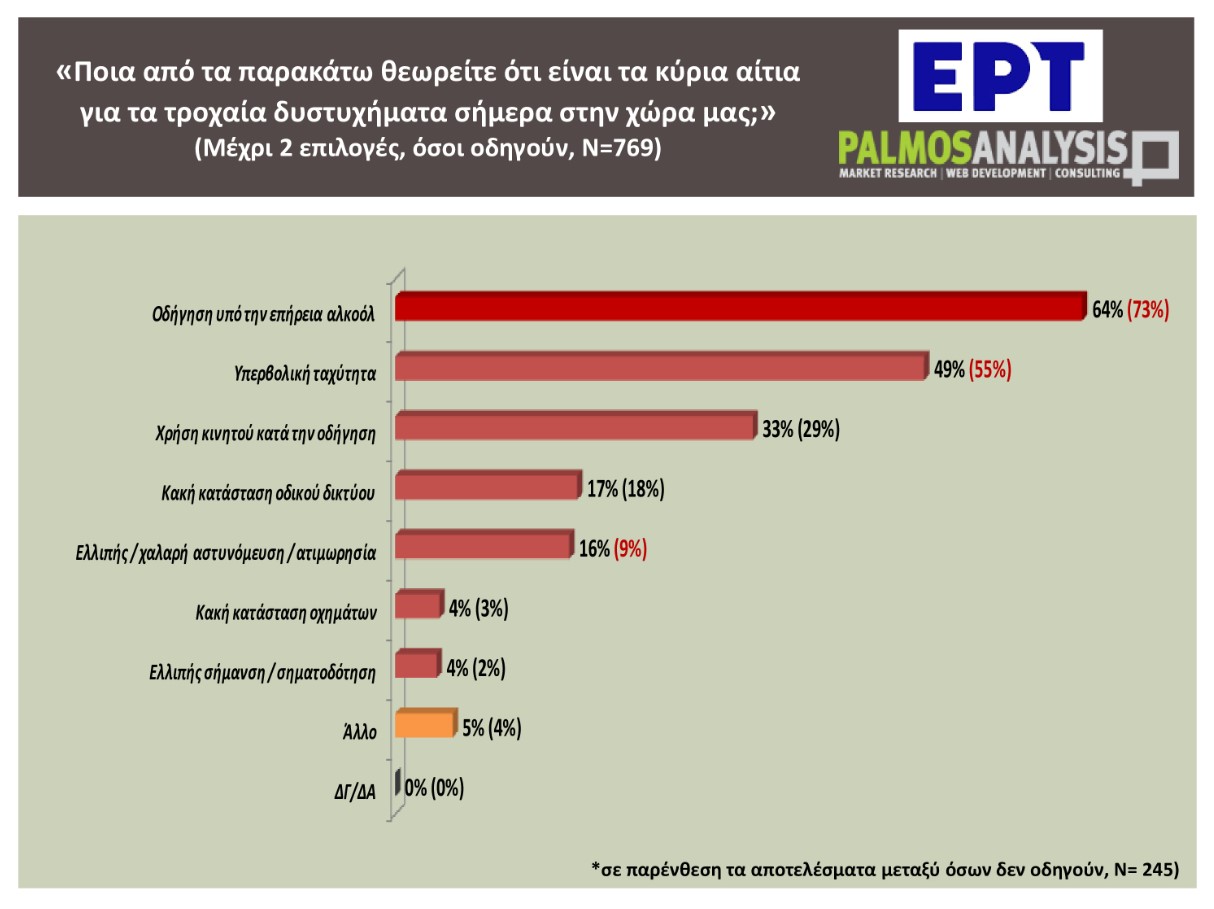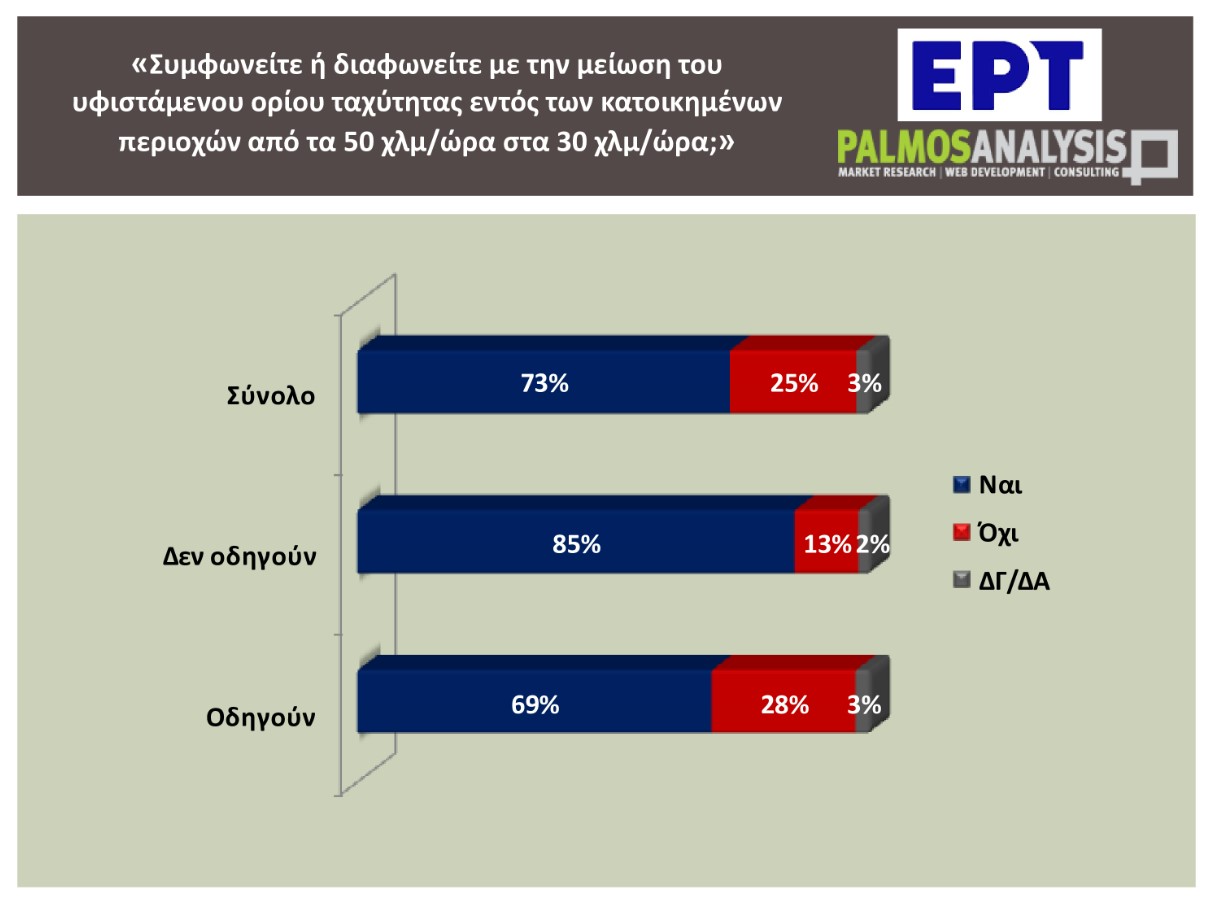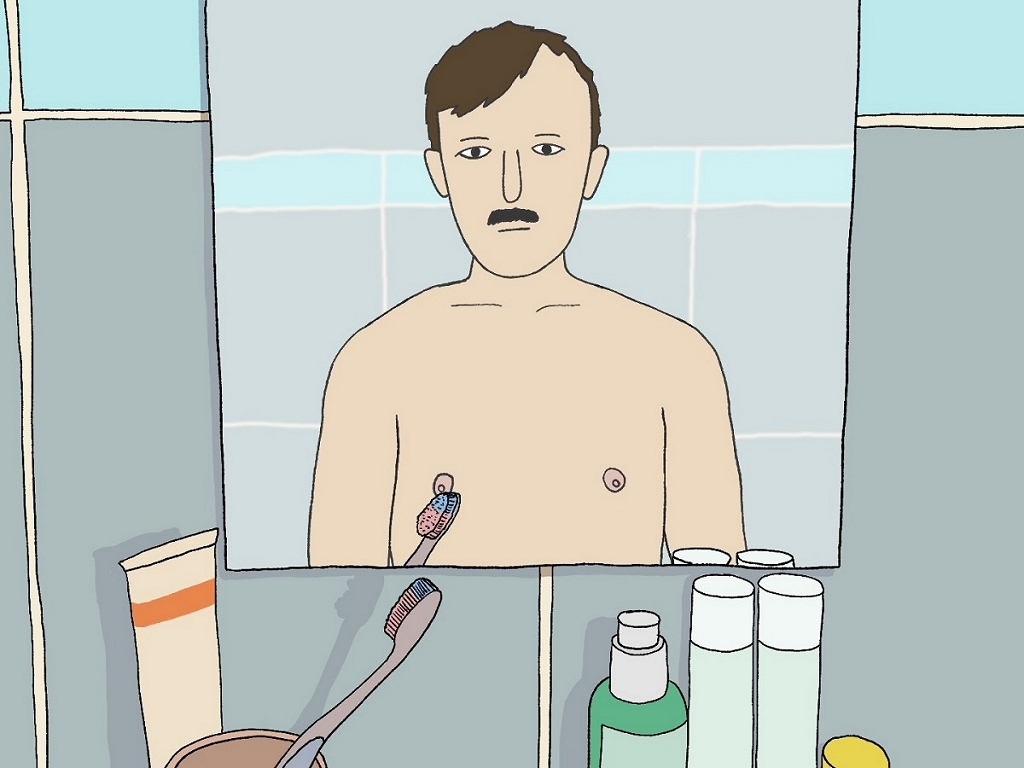Research: Half driving with their cellphone in hand, one in five under the influence of alcohol

Particularly interesting are the data from Palmos Analysis’s nationwide research on driving behavior on the country’s streets and agents linked to traffic accidents and accidents such as alcohol consumption and the violation of the red traffic light.
Alarming, however, is the element of the use of mobile as almost half the drivers admit that they drive with the phone in hand, either often or sometimes. Also one in five leads drunk or violates red traffic lights, as this research showed on Thursday on ERTnews and the « Analysis » show.
Interestingly, 65% admits that they violate the speed limit, with the overwhelming majority of citizens in favor of reducing existing speed limits within residential areas, as well as the placement of cameras on the central roads to record traffic.
According to the survey, which took place from March 26 to March 31, 2025, about three out of four inhabitants of the country’s major urban centers (73%) drive a car and about one in 20 scooters, while 21% say they do not drive a vehicle.
Universal Agreement (87%) is recorded between drivers to install cameras on central roads
The alcohol factor in accidents, at the top of the answers
In the vast majority, respondents believe that driving under alcohol is the main cause of traffic accidents in our country (64% of drivers and 73% of those who do not drive).
Following are excessive speed (49% and 55% respectively), the use of mobile driving (33% and 29% respectively), while the poor road network (17% and 18% respectively), poor/loose policing and impunity (16% respectively), 4% respectively (4% respectively), marking/signaling (4% and 2% respectively).
Among those leading, improving drivers’ training is recorded as the most appropriate way to reduce traffic accidents in our country (46%), while those who do not lead to the tightening of traffic offenses (49%).
Among the drivers are the most frequent controls/policing (44%), the rolling of traffic offenses (41%), the improvement of the road network and the marking (31%), the reduction of speed limits (14%) and the establishment of incentives for renewal (9%).
Among those who do not drive are the improvement in driver training (44%), the most frequent controls/policing (36%), the improvement of the road/marking network as well as the reduction of speed limits (23%) and the incentives to renew the fleet of vehicles (6%).
The agreement (73%) is universal to reduce the existing speed limit within residential areas. The percentage of those who agree is even higher in those who do not drive (85%), but remains extremely majority among drivers (69%).
Universal Agreement (87%) is recorded between drivers to place cameras on the central roads to record traffic offenses and imposing penalties.
Research: problematic driving behavior
About half (47%) admit that they drive with their hand mobile, either always (1%) or often (4%) or sometimes (16%) or rare (26%). About six in 10 (58%) report that they drive by using a mobile via Bluetooth (always 14%, often 15%, sometimes 16%, rarely 12%).
Two in three (65%) admit that they drive at a speed above the limit (always 1%, often 5%, sometimes 34%, rarely 25%). One in five (20%) admits that it leads after alcohol consumption (often 1%, sometimes 4%, rarely 15%).
One in five (20%) admits to a red lantern (always 1%, often 1%, sometimes 4%, rarely 14%). One in 20 (5%) admits that it leaves someone without a diploma to drive (often 2%, sometimes 2%, rarely 1%).
7%of respondent drivers admit that they have allowed a minor under the age of 16 to drive the car with (5%) or without (2%) their supervision.
Nearly nine in 10 drivers, on the other hand, say they always use a seat belt or helmet (87%). One in two drivers (48%) report that they always stop on pedestrian crossings giving priority and only 10% say they never do it.
Finally, the majority of respondents believe that age is not the basic factor in dangerous driving (39%), while 33% believe that very older drivers (over 75 years) have the most dangerous behavior and 27% believe that this behavior comes from very young drivers.









:format(webp)/s3/static.nrc.nl/images/gn4/stripped/data133314127-765aec.jpg)
